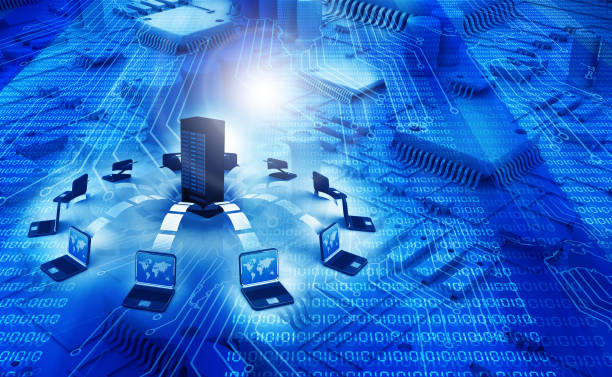Computer networking is a field that deals with the interconnection of computer systems and devices to enable communication and exchange of data and resources. It has become a critical aspect of modern-day businesses and daily life, enabling the seamless exchange of information and collaboration among people, organizations, and machines.
Types of Computer Networks
There are several types of computer networking, each serving a unique purpose and having its set of characteristics. Some of the common types of computer networks are:
- Local Area Network (LAN): A Local Area Network (LAN) is a group of interconnected devices that are close to each other and are connected using a common communication medium, such as Ethernet or Wi-Fi. LANs are typically used in small to medium-sized organizations and homes, and they allow users to share resources such as printers, files, and internet access.
- Wide Area Network (WAN): A Wide Area Network (WAN) is a large-scale network that spans cities, countries, or even continents. WANs are typically used by organizations with multiple branches, or by service providers that offer internet access to customers over a large geographic area. They are connected using communication technologies such as leased lines, satellites, or the public internet.
- Metropolitan Area Network (MAN): A Metropolitan Area Network (MAN) is a computer network that spans a metropolitan area, such as a city. MANs are typically used by organizations with multiple branches within a city, and they allow users to share resources and exchange data over a wide area.
- Storage Area Network (SAN): A Storage Area Network (SAN) is a high-speed network that is specifically designed for the storage and retrieval of data. SANs are typically used by organizations that need to store large amounts of data, such as data centers, and they allow users to access the data at high speeds.

Network Protocols
A network protocol is a set of rules that govern communication and data exchange over a computer network. There are several commonly used network protocols, including:
- Transmission Control Protocol/Internet Protocol (TCP/IP): Transmission Control Protocol/Internet Protocol (TCP/IP) is a suite of communication protocols that are used to connect devices over the internet. It is the underlying technology that makes the internet possible and is used by most organizations and individuals to connect to the internet and exchange data.
- User Datagram Protocol (UDP): User Datagram Protocol (UDP) is a simple and fast communication protocol that is used to send data over a network. Unlike TCP, which ensures the reliable delivery of data, UDP does not guarantee the delivery of data and is often used for applications that require fast, real-time communication.
- File Transfer Protocol (FTP): File Transfer Protocol (FTP) is a widely used protocol for transferring files over the internet. It allows users to upload and download files to and from a server, and it is typically used by organizations to transfer large amounts of data.
Network Topologies
A network topology is a way in which devices and computers are connected to each other in a network. There are several common network topologies, including:
- Star Topology: In a star topology, all devices are connected to a central device, such as a hub or switch. This central device manages the flow of data between the devices, and it is typically used in small to medium-sized networks.
- Bus Topology: In a bus topology, all devices are connected to a common communication medium, such as a cable. Data is transmitted along the cable, and each device can receive and transmit data. This type of topology is simple and inexpensive, but it can be difficult to manage as the network grows in size.
- Ring Topology: In a ring topology, all devices are connected in a circular fashion, and data is transmitted from one device to the next in a single direction. This type of topology is typically used in large networks and provides a reliable and efficient means of transmitting data.
- Mesh Topology: In a mesh topology, each device is connected to every other device in the network. This type of topology provides the highest level of redundancy and reliability, as data can be transmitted from one device to another using multiple paths. However, it is also the most complex and expensive type of topology.
Network Devices
There are several types of devices that are commonly used in computer networks, including:
- Routers: Routers are devices that connect multiple networks together and control the flow of data between them. They use network protocols and routing algorithms to determine the best path for data to travel, and they can also provide security features such as firewalls and VPNs.
- Switches: Switches are devices that connect devices within a network and control the flow of data between them. They use MAC addresses to determine the destination of data, and they can also provide security features such as access control lists (ACLs).
- Hubs: Hubs are simple devices that connect devices within a network and broadcast data to all connected devices. They do not provide any security features, and they are being replaced by switches in modern networks.
- Bridges: Bridges are devices that connect two or more network segments together and control the flow of data between them. They use MAC addresses to determine the destination of data, and they can also provide security features such as firewalls and VPNs.

Conclusion
Computer networking is a critical aspect of modern-day businesses and daily life, enabling the seamless exchange of information and collaboration among people, organizations, and machines. By understanding the basics of computer networking, individuals and organizations can make informed decisions about their network infrastructure and ensure reliable and efficient communication.

